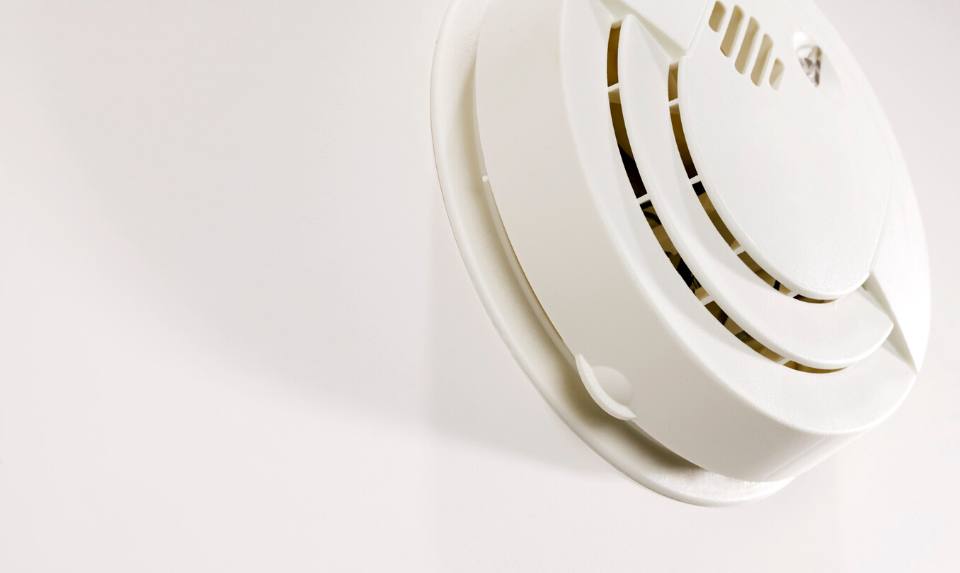Choosing and installing different types of fire alarms accurately – and assure they are in working order – is a critical role for housing providers, jointly providing the best protective standard likely for tenants. This comes down to fitting an appropriate alarm in a suitable location, and makes sure compliance with legislation and suggested best practice.
To Consider:
Prior to purchasing any types of alarms – whether this is carbon monoxide, heat or a smoke alarm – always make sure it complies with industry standards.
In addition, think about its implementation; alarms can be powered by battery or mains, or a combination of both (in general with a battery as a backup for mains power). They can as well be interlinked via wireless radio frequency (RF) technology, or be hard wired interlinked.

Different Types of Fire Alarms
Categorically, there are four major types of alarm on the market, each with separate installation needs:
(1) Ionisation alarms – these are sensitive to small particles of smoke produced by fast flaming fires.
Installation: Ionisation alarms should not be placed close to kitchens/hallways as they are more accountable to false alarm because of cooking fumes.
(2) Optical alarms – among the types of fire alarms, these are efficient at detecting huge particles of smoke from slow-burning, ‘smouldering’ fires.
Installation: These can be located near kitchens and in circulation spaces, but not too close to poorly aerated bathrooms as they are responsible to false alarm when exposed to steam.
(3) Multi-sensor alarms – Multi-sensor alarms have two separate sensing elements – optical and heat detection. As the unit monitors for two different by-products of fires (smoke and temperature), its reaction to all types of fire is greatly enhanced over traditional solitary sensor alarms. They are as well less prone to false alarms connected with the ionisation and the optical type alarms.
Installation: Multi-sensor technology gets rid of the need to fit separate ionisation and optical alarms, and offers a faster response to both fast-flaming and slow blazing fires in a particular alarm.
(4) Heat alarms – these can detect a boost in temperature and not sensitive to smoke. Heat alarms are suitable for kitchens, garages and lofts.
Installation: Heat alarms have to be used in kitchens, but must also be part of a consistent fire alarm system.
Best practice for positioning CO and fire alarms:
- On the ceiling, as innermost as possible in the room
- Sited 300mm from walls and light fittings – this makes sure the alarm is out of any ‘dead air’ spaces where the airflow possibly will be jammed
- Placed within 3m of each escape door and bedroom door to makes sure audibility
- Situated between high risk rooms and bedrooms
- For peaked and sloped ceilings – make sure there is a maximum of 600mm vertically down from the top for smoke alarms, and 150mm vertically down for heat alarms.
Heat alarm
Suggested: kitchen, garage, loft
Smoke alarm
Suggested: All circulation locations (e.g. landings), bedrooms and sitting rooms.
Carbon Monoxide
CO alarms have to be installed:
- Between 1m–3m from all possible sources of carbon monoxide (fuel burning appliance)
- Sited 300mm apart from walls and light fittings – this is to makes sure that they are outside of any ‘dead air’ spaces that happens in corners and spaces where the airflow may well be blocked.
If the fuel burning appliance is in a restricted space (e.g. a boiler room) then the alarm has to be sited on the ceiling just outside the room.

If there is no fuel-burning appliance, then position the alarm at breathing height e.g. bed’s head height in bedroom
Carbon Monoxide Alarm
Suggested: In every rooms with fuel burning appliance, bedrooms.
It is also advised that CO alarms should not be set up:
- Where it can be obstructed
- Where the temperature may drop below –5 ºC or exceed 40 ºC.
- Next to a door, window, extractor fan, air vent or similar ventilation opening
- Want to install a mains-powered smoke alarm system in a property? We’d recommend
- In an enclosed space
- Directly above a sink
Maintaining Alarms After Installation
While mechanical and electrical contractors require ensuring alarms are performing and placed in the most appropriate location, alarms also require to be regularly tested and cleaned. It is also suggested to carefully clean your fire alarms with a vacuum cleaner built-in with the soft brush once a month.
